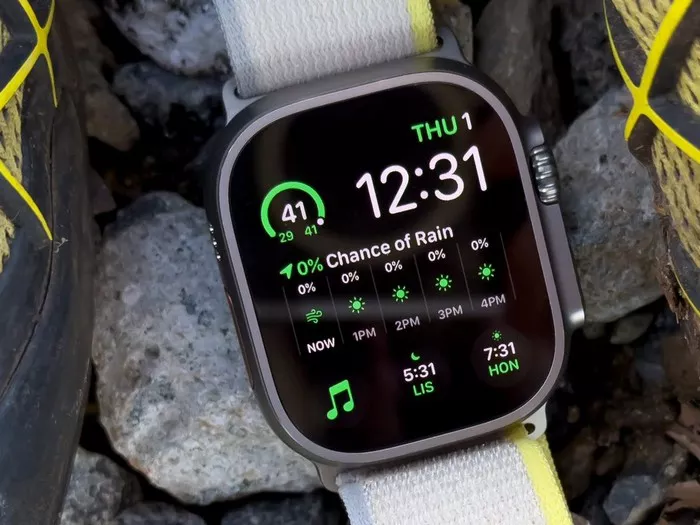As wearable technology continues to advance, the Apple Watch stands out as a versatile device that goes beyond telling time. One critical aspect of health monitoring is blood pressure, a key indicator of cardiovascular health. In this comprehensive guide, we will delve into the question: Does the Apple Watch monitor blood pressure? We’ll explore the health tracking features, limitations, and the role of third-party apps in blood pressure monitoring.
1. Health and Fitness Tracking: The Core of Apple Watch
The Apple Watch is renowned for its robust health and fitness tracking capabilities. From heart rate monitoring to tracking physical activity and sleep patterns, the device aims to empower users with insights into their well-being. However, blood pressure monitoring poses unique challenges due to the nature of the measurement.
2. Heart Rate Monitoring: A Vital Metric
While the Apple Watch excels in monitoring heart rate, it’s important to distinguish between heart rate and blood pressure. The watch uses advanced sensors to provide real-time heart rate data, allowing users to track their cardiovascular activity during various activities and gain insights into their overall cardiac health.
3. Blood Pressure Monitoring: The Current Landscape
As of the latest available information, the Apple Watch does not have a built-in mechanism for direct blood pressure monitoring. Traditional blood pressure measurements typically require a cuff that inflates and deflates to measure systolic and diastolic pressures. However, advancements in health technology may pave the way for future iterations of the Apple Watch to include blood pressure monitoring capabilities.
4. Third-Party Apps: Bridging the Gap
While the native Apple Watch apps may not include blood pressure monitoring, third-party apps have emerged to fill this gap. Developers have created apps that claim to estimate blood pressure using the device’s existing sensors. It’s crucial to approach these apps with a degree of caution, as their accuracy may vary, and they may not be as reliable as traditional blood pressure monitoring methods.
5. Role of Sensors: Understanding Limitations
The sensors present in the Apple Watch, including the optical heart rate sensor and the electrical heart sensor, primarily focus on measuring heart rate and rhythm. These sensors may not provide the precise data required for accurate blood pressure monitoring, which involves measuring the force of blood against the walls of the arteries.
6. ResearchKit and Health Studies: Contributing to Medical Research
Apple has introduced ResearchKit, a platform that enables medical researchers to create apps for collecting health data. Health studies conducted in collaboration with healthcare institutions may explore innovative ways to monitor various health metrics, including blood pressure. While this contributes to medical research, it may not directly translate into consumer-facing features in the near term.
7. Blood Oxygen Monitoring: A Related Metric
In recent Apple Watch models, blood oxygen monitoring has been introduced as a feature. This measures the oxygen saturation level in the blood, providing insights into respiratory and circulatory health. While not a direct replacement for blood pressure monitoring, it adds another dimension to the overall health picture.
8. Smart Cuff Solutions: The Future of Blood Pressure Monitoring?
While the Apple Watch itself does not currently monitor blood pressure, there are emerging smart cuff solutions that integrate with the device. These smart cuffs connect to the Apple Watch via Bluetooth, allowing users to measure their blood pressure and sync the data with health apps on their iPhones. This approach combines the convenience of a wearable with the accuracy of traditional blood pressure monitoring.
9. Blood Pressure Monitoring Challenges: Accuracy and Calibration
Accurate blood pressure monitoring involves precise calibration and adherence to standardized measurement protocols. Wearable devices, including the Apple Watch, face challenges in replicating the accuracy of traditional blood pressure cuffs. Factors such as device placement, skin tone, and motion can impact the reliability of readings.
Conclusion: The Evolving Landscape of Health Tracking
In conclusion, as of the present moment, the Apple Watch does not directly monitor blood pressure through its native features. While heart rate monitoring and blood oxygen measurements contribute valuable insights into cardiovascular health, users seeking blood pressure monitoring capabilities may need to explore third-party solutions. As technology continues to advance, it’s plausible that future iterations of the Apple Watch may incorporate more sophisticated sensors and features to enhance health monitoring. In the evolving landscape of wearable technology, the quest for accurate and convenient blood pressure monitoring remains an area of active exploration and innovation.

